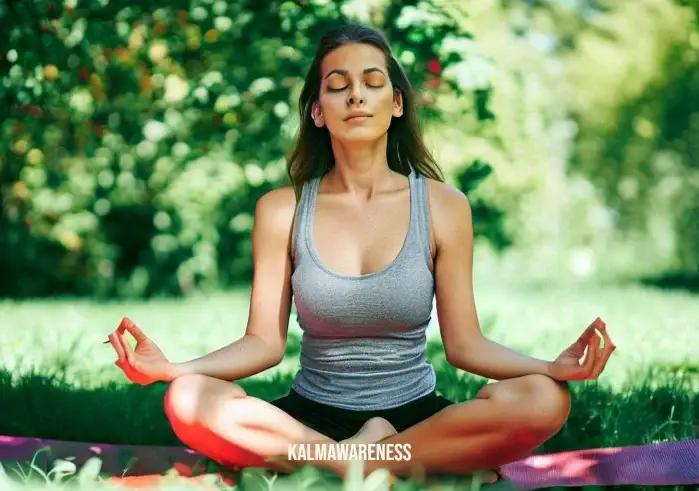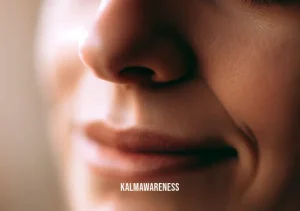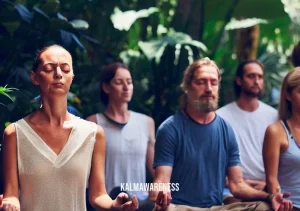Exploring the Graceful Butterfly Pose
Introduction
Welcome to the fascinating world of yoga, where the body, mind, and spirit unite in harmony. In this article, we will delve into the enchanting realm of the Butterfly Pose, a graceful and transformative posture that opens up a world of physical and mental benefits. Prepare to spread your wings and embark on a journey of self-discovery and inner peace.
Table: Butterfly Pose Essentials
| Description | Explanation |
|---|---|
| Pose Name | Butterfly Pose Yoga |
| Original Name | Baddha Konasana |
| Difficulty Level | Moderate |
| Pose Category | Seated Posture, Hip Opener |
| Exercise Duration | Beginners: 1-2 minutes<br>Advanced: 3-5 minutes |
Step-by-Step Guide to the Butterfly Pose
Step 1: Find Your Sacred Space
Choose a tranquil and serene space for your yoga practice. Create an ambiance that nurtures relaxation and introspection. Whether it’s a dedicated yoga studio or a peaceful corner in your home, make sure you have enough room to comfortably sit and extend your legs.
Step 2: Come to a Seated Position
Start in a seated position on your yoga mat. Extend your legs forward, keeping your spine tall and your shoulders relaxed. Take a moment to ground yourself and connect with your breath. Close your eyes, inhaling deeply through your nose, and exhaling slowly through your mouth.
Step 3: Bend Your Knees and Bring the Soles of Your Feet Together
Bend your knees and draw your heels toward your pelvis. Allow the soles of your feet to touch each other, forming a diamond shape with your legs. Gently hold your feet or ankles with your hands, using your elbows to press against your thighs. Keep your spine long and your chest lifted.
Step 4: Find Your Inner Stability
Root yourself firmly into the ground as you engage your pelvic floor and core muscles. Imagine a string pulling the crown of your head towards the sky, lengthening your spine. Maintain a balance between relaxation and activation throughout your body.
Step 5: Open Your Wings
Inhale deeply and as you exhale, gently press your knees down towards the ground using your elbows. Allow your hips to open up like the wings of a butterfly. Feel a gentle stretch in your inner thighs and groin area. Be mindful not to force the movement but rather let your body guide you deeper into the pose.
Step 6: Breathe and Surrender
As you settle into the pose, surrender to the present moment. Close your eyes if comfortable and focus on your breath. Inhale, inviting fresh energy and vitality, and exhale, releasing any tension or tightness. Allow yourself to fully embrace the serenity and tranquility that accompanies this beautiful posture.
Continue to the next part of the article, where we will explore the profound benefits of the Butterfly Pose, both for the body and the mind. Discover how this exquisite posture can enhance your physical well-being and ignite a sense of inner transformation.

The Transformative Power of Butterfly Pose: Benefits, Variations, and Precautions
Welcome to the second part of our exploration of the enchanting Butterfly Pose! In this chapter, we will dive deeper into the incredible benefits this pose offers, explore variations suitable for practitioners of different levels, and discuss who should avoid this pose due to certain limitations. Let’s continue our journey into the world of grace and transformation.
Discover the Benefits
The Butterfly Pose, also known as Baddha Konasana, is renowned for its numerous physical, mental, and energetic benefits. Let’s explore how this beautiful posture can positively impact your well-being:
- Hip and Groin Opening: As you gently press your knees towards the ground, Butterfly Pose provides a deep stretch to the hips, inner thighs, and groin area. This helps to release tension, improve flexibility, and enhance the range of motion in these regions.
- Stimulates Digestion: The gentle compression of the abdominal region in Butterfly Pose stimulates the digestive organs, promoting healthy digestion and relieving digestive discomfort. It can help alleviate symptoms of bloating, gas, and constipation.
- Eases Menstrual Discomfort: Practicing Butterfly Pose during menstruation can provide relief from menstrual cramps and discomfort. The pose helps to relax the pelvic muscles, increase blood flow to the reproductive organs, and balance hormonal levels.
- Calming and Grounding: The seated nature of this pose encourages a sense of grounding and inner calm. It can help reduce anxiety, stress, and mental fatigue, allowing you to find tranquility and balance in your mind and emotions.
- Enhances Circulation: Butterfly Pose promotes healthy blood circulation throughout the lower body. This increased blood flow nourishes the muscles, joints, and organs in the area, aiding in detoxification and providing a rejuvenating effect.
- Prepares for Meditation: The seated position of Butterfly Pose creates a stable foundation for meditation practice. By opening the hips and creating an upright posture, it cultivates a sense of ease and comfort, allowing you to delve deeper into your meditation practice.
Variations for Every Level
Whether you’re a beginner or an experienced practitioner, there are variations of Butterfly Pose that can cater to your level of experience and flexibility. Let’s explore these variations:
- Supported Butterfly Pose: For beginners or individuals with limited flexibility, placing yoga blocks or folded blankets under the outer thighs can provide support and allow for a more comfortable opening of the hips.
- Dynamic Butterfly Pose: Advanced practitioners can introduce a dynamic element to Butterfly Pose by gently flapping the legs up and down, imitating the wings of a butterfly. This movement increases the intensity of the stretch and stimulates circulation.
- Forward Fold Variation: To deepen the stretch in the hips and lower back, gently fold forward from the hips while maintaining the diamond shape of the legs. Keep the spine long and allow the head and neck to relax towards the ground.
- Bound Angle Pose: This variation involves bringing the feet closer to the pelvis, allowing the knees to open wider. Holding onto the feet or ankles, gently press the elbows into the thighs to deepen the stretch in the hips.
Precautions and Contraindications
While Butterfly Pose offers numerous benefits, it may not be suitable for everyone. Here are some precautions and contraindications to consider:
- Knee or Groin Injury: Individuals with knee or groin injuries should approach this pose with caution. If you experience pain or discomfort in these areas, modify or avoid the pose altogether.
- Recent Hip Surgery: If you’ve undergone recent hip surgery or have any hip-related conditions, consult with a healthcare professional or a qualified yoga instructor before practicing Butterfly Pose.
- Pregnancy: Pregnant individuals should practice Butterfly Pose with caution. As the pregnancy progresses, modifications may be necessary to accommodate the growing belly. Consult with a prenatal yoga specialist for guidance.
- Sciatica or Lower Back Issues: If you have sciatica or lower back issues, it’s advisable to avoid or modify Butterfly Pose to avoid aggravating these conditions. Seek guidance from a knowledgeable yoga instructor or healthcare professional.
Conclusion
As we conclude this chapter, we have explored the multitude of benefits that Butterfly Pose offers, including hip and groin opening, digestive stimulation, and a sense of grounding. We’ve also discussed variations suitable for practitioners of different levels, allowing for a tailored experience. Remember, it’s essential to practice with mindfulness and respect for your body’s limitations.
In the next part of our article, we will continue our journey into the captivating world of yoga by exploring more poses that complement and enhance the practice of Butterfly Pose. Prepare to expand your horizons and delve deeper into the transformative power of yoga.

Unveiling the Essence: History, Spirituality, and Optimization of Butterfly Pose
Welcome to the third and final part of our captivating journey through the world of the enchanting Butterfly Pose! In this chapter, we will delve into the rich history of this pose, explore its spiritual significance, discover tips to optimize your practice, learn about common mistakes to avoid, explore modifications for individuals with injuries or limited flexibility, and uncover poses that beautifully complement Butterfly Pose. Let’s embark on this transformative exploration!
The History of Butterfly Pose
Butterfly Pose, also known as Baddha Konasana, has a profound historical background rooted in the ancient tradition of yoga. This pose has been practiced for centuries and holds significance in various yogic lineages. Its origins can be traced back to the ancient yogic texts, where it was mentioned as a posture that facilitates deep meditation and inner awakening. The graceful and symmetrical formation of the legs, resembling the wings of a butterfly, has been honored as a symbol of spiritual transformation and freedom.
The Spiritual Significance
Beyond its physical benefits, Butterfly Pose holds deep spiritual symbolism. The pose represents the balance between the feminine and masculine energies within us, creating a harmonious union. It invites a sense of surrender and openness, allowing practitioners to connect with their inner selves and the divine energy. As you embrace the posture, visualize the gentle fluttering of a butterfly’s wings, symbolizing the delicate yet profound transformation that can occur through dedicated spiritual practice.
Tips for Maximizing Your Practice
To make the most out of your Butterfly Pose experience, here are some valuable tips to consider:
- Find Comfortable Support: Place a folded blanket or cushion under your sit bones to provide support and elevate your hips, especially if you experience discomfort or tension in your lower back or hips. This allows for a more relaxed and sustainable practice.
- Engage Mindfully: While practicing Butterfly Pose, maintain a gentle engagement of the pelvic floor muscles and the lower abdominal region. This subtle engagement creates stability and enhances the energetic flow throughout your body.
- Embrace Gradual Progress: Approach the pose with patience and respect for your body’s unique limitations. Gradually work on increasing the duration and depth of the stretch over time, allowing your body to adapt and grow.
- Breathe Deeply: Focus on deep, mindful breaths as you hold Butterfly Pose. Inhale deeply, expanding your abdomen and chest, and exhale fully, releasing any tension or resistance. Allow your breath to guide you into a state of relaxation and inner calm.
Common Mistakes to Avoid
To ensure a safe and effective practice, be mindful of the following common mistakes:
- Forcing the Knees: Avoid forcefully pressing your knees towards the ground. Instead, allow the stretch to be gentle and natural. Respect your body’s limitations and honor the pace of your progress.
- Rounding the Spine: Maintain a tall and lengthened spine throughout the pose. Avoid rounding your back or hunching your shoulders forward. Imagine a golden thread lifting you from the crown of your head.
- Neglecting the Breath: Stay connected to your breath throughout the practice. Avoid shallow breathing or holding your breath. Smooth and conscious breathing enhances the benefits of the pose and deepens the sense of relaxation.
Modifications for Injuries and Flexibility
For individuals with injuries or limited flexibility, modifications can be incorporated to ensure a safe and comfortable practice. Here are some variations to consider:
- Seated Bound Angle Pose: If you experience discomfort or strain in your knees or hips, perform a seated version of the pose. Sit on the edge of a folded blanket with your legs extended forward. Place a strap around the feet and gently pull it towards your torso, allowing the knees to open naturally.
- Supported Butterfly Pose: Utilize additional props such as blocks or bolsters to support the knees and hips. By elevating the knees slightly, you can reduce strain on the joints and create a more accessible variation.
- Chair Butterfly Pose: For individuals with severe hip or knee issues, practicing Butterfly Pose while seated on a chair can provide a gentle stretch. Place the feet flat on the ground, allowing the knees to open comfortably.
Complementary Poses for an Integrated Practice
To expand and enrich your yoga practice, here are some poses that beautifully complement Butterfly Pose:
- Seated Forward Fold (Paschimottanasana): This pose stretches the entire posterior chain, including the spine, hamstrings, and calves. It complements Butterfly Pose by further releasing tension in the lower back and promoting a sense of surrender.
- Cobra Pose (Bhujangasana): Cobra Pose opens the chest, strengthens the back muscles, and stimulates the abdominal organs. Practicing Cobra Pose after Butterfly Pose creates a harmonious balance between opening the hips and elongating the spine.
- Seated Meditation (Dhyana): After practicing Butterfly Pose, transition into a seated meditation to integrate the physical, mental, and spiritual aspects of your practice. Allow the stillness and tranquility of meditation to permeate your entire being.
Conclusion
Congratulations on completing our holistic journey through the world of Butterfly Pose! In this chapter, we uncovered the historical roots, spiritual significance, and optimization techniques for this transformative posture. We also explored modifications for individuals with injuries or limited flexibility, common mistakes to avoid, and poses that beautifully complement Butterfly Pose.
As you continue on your yoga path, remember to approach your practice with curiosity, patience, and self-compassion. Embrace the transformative power of yoga, both on and off the mat, and allow the wisdom of Butterfly Pose to guide you towards inner peace and personal growth.
May your wings of self-discovery continue to unfold as you explore the vast realms of yoga!





